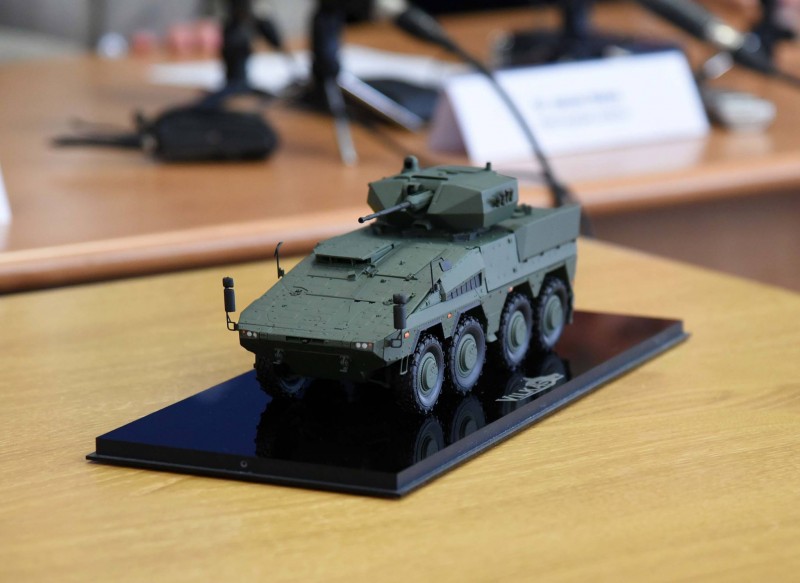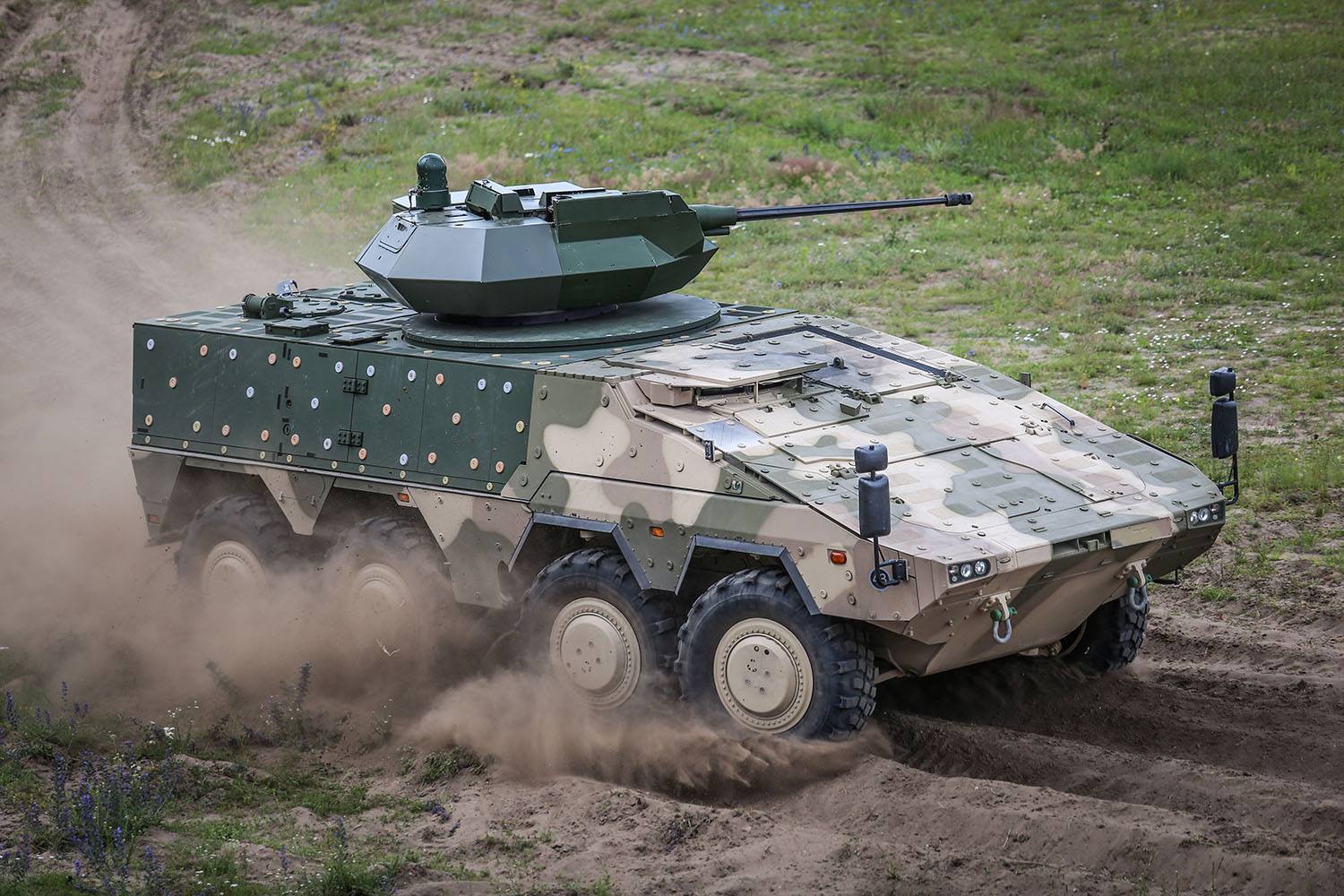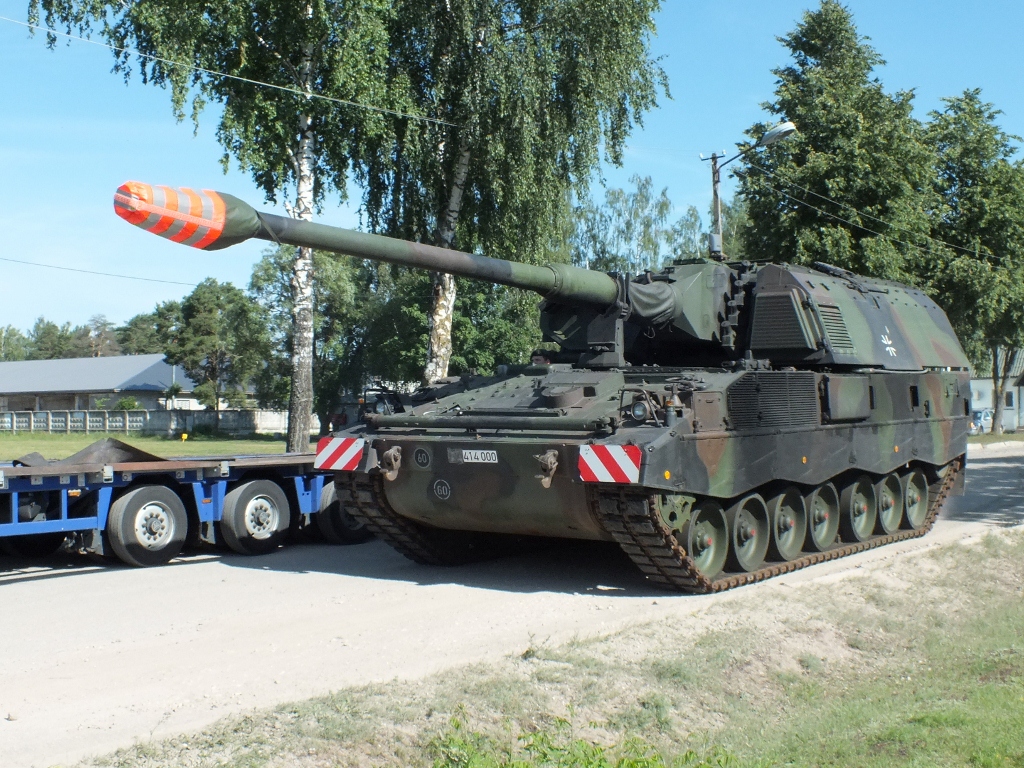German Armoured Cavalry for Lithuania
In
Login if you are already registered
(no votes) |
(0 votes) |
Research Fellow at the Primakov Institute of World Economy and International Relations under the Russian Academy of Sciences, RIAC expert
On August 22, 2016, Lithuania signed a contract for the purchase of 88 Boxer personnel carriers worth 385.6 million euro, making it the largest defence contract in the post-Soviet history of all the Baltic States.
The much-publicized falling out between Russia and the West in the wake of the Ukrainian crisis has given a second wind to the militaries in Baltic nations. It was not too long ago that the ailing armed forces of these countries received an injection of funding to help counter the falling numbers of military personnel and embark upon an admittedly modest military equipment procurement programme. The largest and wealthiest of the three Baltic countries, Lithuania, even reintroduced conscription in 2015. The influx of new troops has allowed the country to set the wheels in motion for the formation of a second mechanized infantry – the Žemaitija, which was disbanded ten years ago due to a lack of funding. The plan is to bring the infantry up to strength using conscripts and fit it out with equipment that is currently being used by the first brigade (made up of regular, non-conscripted, officers), known as “Iron Wolf”, and which had originally belonged to (and been written off by) the Bundeswehr and other European armies.
In turn, the “Iron Wolf” Infantry Brigade would be in line for modern equipment. The German consortium ARTEC won a tender in 2015 for the supply of armoured vehicles, thus solving the main problem. Or, at least, this is what people thought, until the Lithuanians received an offer to buy U.S. Stryker armoured vehicles instead of ARTECS Boxers. An official request was even made in Congress (which is usually a formality) to sell the vehicles and related equipment to Lithuania for 599 million dollars. It didn’t end here, as the Lithuanian side returned once again to the German company’s proposal. It is unclear just what the deal was here – an obvious manifestation of pro-German versus pro-American facets sympathies within the Lithuanian government; an attempt to play the sides against one another in order to get the best deal; or genuine indecisiveness.

ARTEC "Boxer" model, Lithuaninan variant Rafael Samson Mk 2(с)JonasVytautasZukas
Boxer is a family of wheeled armoured vehicles that includes a mechanized infantry transportation vehicle (so-called “linear” armoured personnel carriers), as well as a command-vehicle, an ambulance and self-propelled howitzers, among others. The Lithuanian side stated that they were only interested in purchasing linear vehicles (84 in total) and four command-vehicles. The Boxer is one of the heaviest vehicles of its class, with a combat weight of 35 tonnes (for the version with upgraded protection, which is what the Lithuanian side has chosen). In comparison, the Russian BMP-3 weighs about half that much. In addition to the three-man crew, the linear vehicle carries eight infantrymen. It is worth noting that Lithuania will become the first country to import the Boxer vehicles, if you don’t count the Netherlands, which was initially involved in the development programme as a partner of Germany. The contract, according to estimates given by the Ministry of National Defence of the Republic of Lithuania, is worth 4.38 million Euros per vehicle, although this figure likely includes related materials – in any case, this is about the price that one would expect to pay for a modern primary battle tank.
Desert combat

ARTEC "Boxer" prototype, Lithuanian variant Rafael Samson Mk 2(с)JonasVytautasZukas
modules are available as an option for the linear armoured vehicles. The Lithuanians initially considered purchasing KMW RCT-30 modules equipped with modern German 30-mm guns, 5.56-mm machine guns and Javelin anti-tank missiles, which are similar to the ones found on the German vehicles. But after carrying out comparative tests, they eventually opted for the cheaper and somewhat easier to operate Israeli Rafael Samson Mk 2 module with an older 30-mm manufactured in the United States [1], a 7.62-mm machine gun and Spike-LR anti-tank missiles. The addition of the module makes the Boxer more of a mechanized infantry combat vehicle than a personnel carrier.
.jpg)
American Boxer's opponent Stryker with Kongsberg MCT-30(с) General Dynamics module
The Boxers are set to be delivered in 2017–2021, by which time the process of transferring the equipment belonging to the “Iron Wolf” infantry brigade to the second mechanized infantry should be complete. The vehicles will receive a new name in the Lithuanian Armed Forces – Vilkas (“wolf”). According to Minister of National Defence Juozas Olekas, the contract “is a signal that Lithuania takes care of its national security and invests heavily in doing so.” The country is relying on Germany in its rearmament efforts; in addition to the Boxer, Lithuania has already started to receive deliveries of the German PzH 2000 self-propelled howitzers. The contract for the purchase of 21 howitzers from the Bundeswehr is worth 58.3 million euro, with deliveries to be made in 2016–2019. It does, however, plan to purchase a NASAMS medium to long range air-defence system from Norway.

German 155 mm self-propelled howitzer PzH 2000 delivered to Lithuania from Bundeswehr
The contract for the purchase of advanced and costly German armoured vehicles is yet another sign of the militarization of the region. However, experience shows that short-term spending on military equipment and increasing the number of military personnel are not nearly as important for defence capabilities as sustained work and investments into mastering this equipment. Whether or not the country’s politicians, who are often more than willing to quietly usher through large contracts that are likely bring them financial gain, forgetting completely about the army, will have the money or desire to do so is another question entirely. Lithuania’s less prosperous neighbours have only been able to find the money to buy outdated CVR(T) armoured vehicles from the United Kingdom (in the case of Latvia), and unarmed BMP CV90 chasses (Estonia), which they plan to equip themselves.
In any case, even the modest efforts made by these countries are counterproductive against the backdrop of Russian militarization, as they create even more pressure to aggravate the situation to justify expenditures and whip up anti-Russia hysteria. Lithuania has committed itself forming an army – albeit a relatively small one – that is equipped to European standards. The question is whether the country will have the willpower to stick it out to the end. We are able and should treat the statements made by Lithuanian politicians on history and military strategy with irony and sarcasm, but that still does not change the unequivocal answer to question: Does Russia need another Bundeswehr-esque infantry on Kalinigrad’s doorstep?
1. The German Rheinmetall MK 30-2/ABM differs from the American ATK Orbital Bushmaster Mk 44, specifically in that it can fire projectiles with explosives that can be programmed to detonate in the air at a given distance. This can be used to liquidate enemies behind cover, say, around building corners. The relatively limited opportunities offered for fighting infantry forces by the Israeli module are compensated in part by equipping a machine gun rifle, rather than a small-calibre gun, the kind of which is used on the German module.
(no votes) |
(0 votes) |




